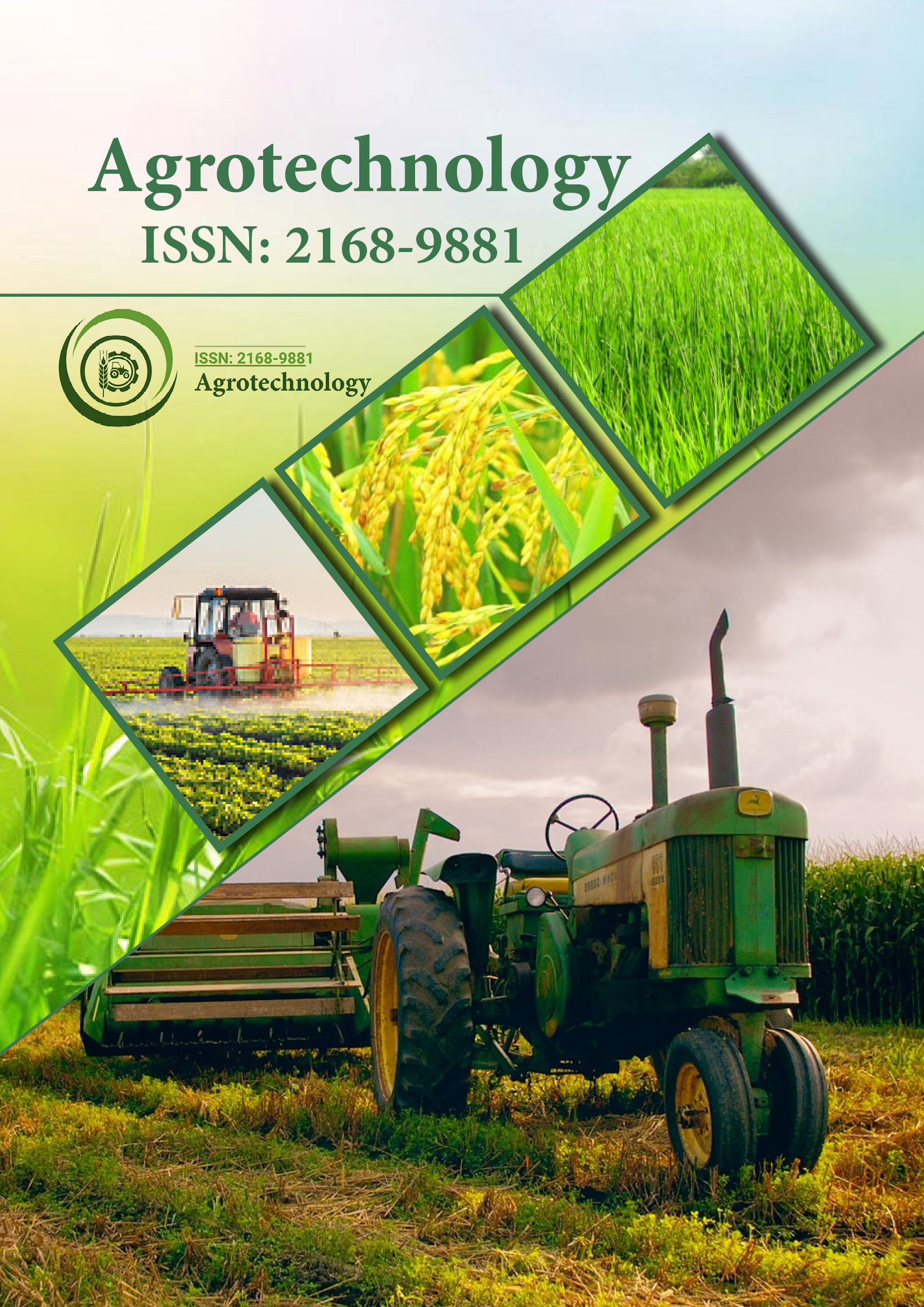Indexed In
- Open J Gate
- Genamics JournalSeek
- Academic Keys
- ResearchBible
- Cosmos IF
- Access to Global Online Research in Agriculture (AGORA)
- Electronic Journals Library
- RefSeek
- Directory of Research Journal Indexing (DRJI)
- Hamdard University
- EBSCO A-Z
- OCLC- WorldCat
- Scholarsteer
- SWB online catalog
- Virtual Library of Biology (vifabio)
- Publons
- Geneva Foundation for Medical Education and Research
- Euro Pub
- Google Scholar
Useful Links
Share This Page
Journal Flyer

Open Access Journals
- Agri and Aquaculture
- Biochemistry
- Bioinformatics & Systems Biology
- Business & Management
- Chemistry
- Clinical Sciences
- Engineering
- Food & Nutrition
- General Science
- Genetics & Molecular Biology
- Immunology & Microbiology
- Medical Sciences
- Neuroscience & Psychology
- Nursing & Health Care
- Pharmaceutical Sciences
Opinion Article - (2024) Volume 13, Issue 3
Assessing Sustainable Cropping Methods for Optimal Patchouli Yields
Marco Gambella*Received: 23-Aug-2024, Manuscript No. AGT-24-26687; Editor assigned: 26-Aug-2024, Pre QC No. AGT-24-26687 (PQ); Reviewed: 10-Sep-2024, QC No. AGT-24-26687; Revised: 17-Sep-2024, Manuscript No. AGT-24-26687 (R); Published: 25-Sep-2024, DOI: 10.35248/2168-9891.24.13.380
Description
Soil quality is a critical factor in agricultural productivity and sustainability. The ability of soil to support healthy plant growth, maintain environmental quality, and promote plant and animal health is essential for successful farming. Various cropping systems are used to cultivate patchouli (Pogostemon cablin), a key aromatic plant known for its essential oil. Assessing the Soil Quality Index (SQI) and its impact on patchouli yields under different cropping systems provide valuable insights into sustainable agricultural practices that enhance both soil health and crop productivity. High yields of high-quality patchouli oil require meticulous management of soil resources. The Soil Quality Index (SQI) is a comprehensive measure that integrates various soil physical, chemical, and biological properties, including soil texture, structure, pH, organic matter content, nutrient levels, and microbial activity.
Different cropping systems can significantly influence the SQI by altering soil properties through various practices such as tillage, crop rotation, cover cropping, and the use of organic or inorganic fertilizers. Common cropping systems for patchouli cultivation include monocropping, intercropping, and agroforestry. Monocropping involves growing patchouli as a single crop without integrating other crops. While this system allows farmers to focus on the specific needs of patchouli, it can lead to soil degradation over time due to continuous nutrient extraction, increased susceptibility to pests and diseases, and reduced biodiversity. Under monocropping, the SQI may decline if soil nutrients are not replenished, resulting in lower patchouli yields and potentially poorer oil quality.
Intercropping involves growing patchouli alongside other crops, such as legumes, vegetables, or other aromatic plants. This system can enhance soil quality by promoting biodiversity, improving soil structure, and increasing nutrient cycling. Leguminous intercrops, for example, can fix atmospheric nitrogen, enriching the soil and reducing the need for chemical fertilizers. The increased plant diversity in intercropping systems can also suppress pests and diseases, lowering the reliance on pesticides. Consequently, the SQI under intercropping systems tends to be higher, supporting better patchouli growth and yields.
Agroforestry integrates patchouli cultivation with trees and shrubs, creating a multi-layered farming system that mimics natural ecosystems. This approach enhances soil organic matter, improves water retention, and provides habitat for beneficial organisms. Trees in agroforestry systems contribute to soil fertility through leaf litter decomposition and root biomass, adding organic matter and nutrients to the soil. Additionally, the shade provided by trees can reduce soil temperature and evaporation rates, promoting a more stable microclimate for patchouli growth. Agroforestry systems often exhibit the highest SQI among cropping systems, leading to sustainable patchouli production with potentially higher yields and better oil quality.
Case studies demonstrate the practical implications of these cropping systems on soil quality and patchouli yields. In monocropping systems, declining soil fertility over consecutive growing seasons often necessitates increased chemical fertilizer inputs, raising production costs and posing environmental risks. Conversely, intercropping systems have shown improvements in soil texture, increased earthworm activity, and enhanced nutrient availability, leading to more robust patchouli plants with higher yields and reduced pest and disease incidence. The inclusion of legumes as intercrops has been particularly beneficial in reducing synthetic nitrogen fertilizer needs and promoting sustainable farming practices. Agroforestry systems have demonstrated even more pronounced benefits, including substantial improvements in soil structure and organic matter content, better water infiltration and retention, and additional income from tree products. Patchouli plants grown under agroforestry systems exhibit greater resilience to climatic fluctuations and pests, contributing to more stable and higher yields.
The positive correlation between SQI and patchouli yields underscores the importance of adopting sustainable cropping systems. Practices that enhance soil quality not only support higher agricultural productivity but also contribute to long-term environmental sustainability. Improving soil health allows farmers to reduce dependency on chemical inputs, lower production costs, and mitigate negative environmental impacts. To promote sustainable patchouli cultivation, several strategies are recommended. Extension services should focus on educating farmers about the benefits of intercropping and agroforestry systems, providing training on implementing these practices effectively. Demonstration plots and farmer field schools can serve as practical learning platforms to showcase the advantages of diversified cropping systems.
Additionally, policies and incentives supporting sustainable agriculture should be strengthened. This can include subsidies for organic fertilizers, grants for agroforestry development, and technical assistance programs. Encouraging the adoption of best practices through financial and technical support can accelerate the transition to more sustainable farming systems. Research and development efforts should continue to explore innovative approaches to enhance soil quality and patchouli yields. This includes studying the interactions between different crop species in intercropping systems, optimizing tree species selection in agroforestry, and developing biofertilizers and biopesticides that support soil health.
In conclusion, the assessment of soil quality index and patchouli yields under various cropping systems reveals that sustainable practices such as intercropping and agroforestry significantly improve soil health and agricultural productivity. By adopting these systems, farmers can achieve higher patchouli yields, reduce environmental impacts, and enhance resilience to market and climatic uncertainties. Promoting sustainable cropping systems is crucial for the long-term viability of patchouli farming, ensuring that this vital agricultural sector continues to thrive while preserving essential natural resources.
Citation: Gambella M (2024). Assessing Sustainable Cropping Methods for Optimal Patchouli Yields. Agrotechnology. 13:380.
Copyright: © 2024 Gambella M. This is an open access article distributed under the terms of the Creative Commons Attribution License, which permits unrestricted use, distribution, and reproduction in any medium, provided the original author and source are credited.


